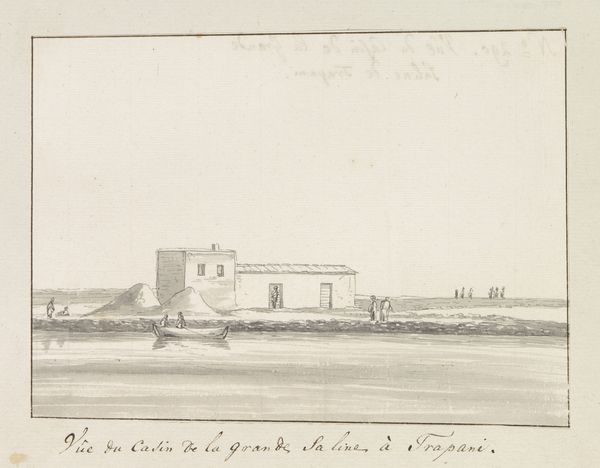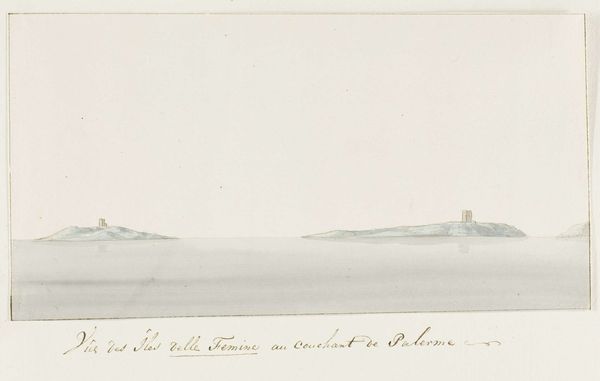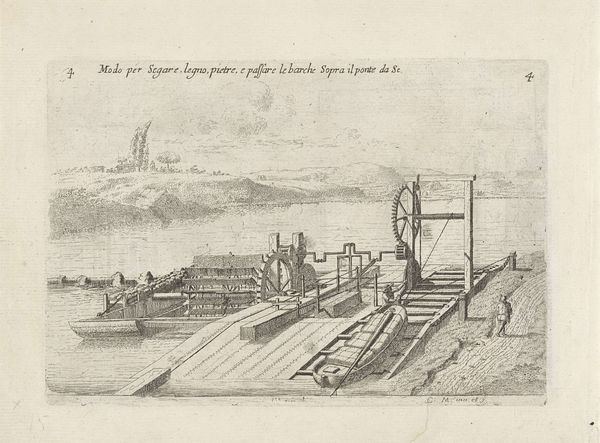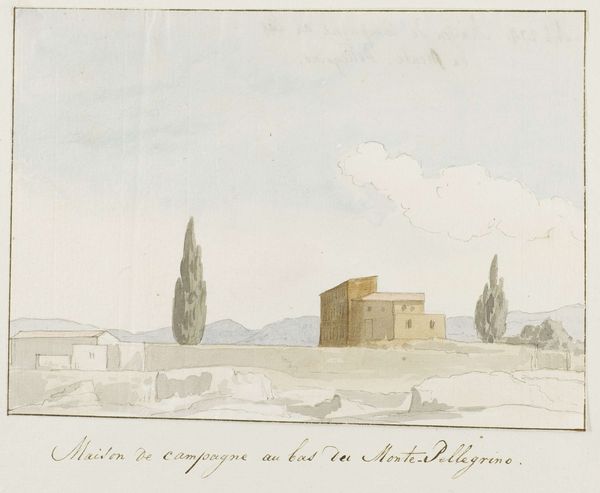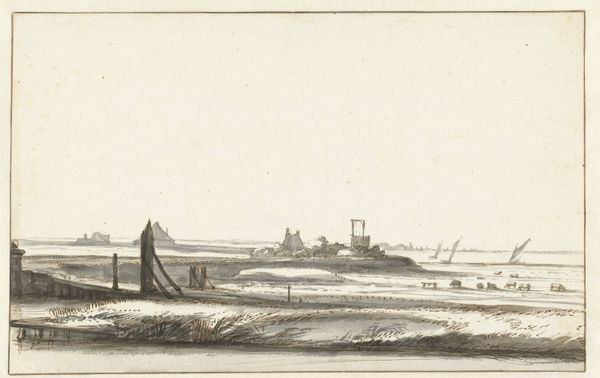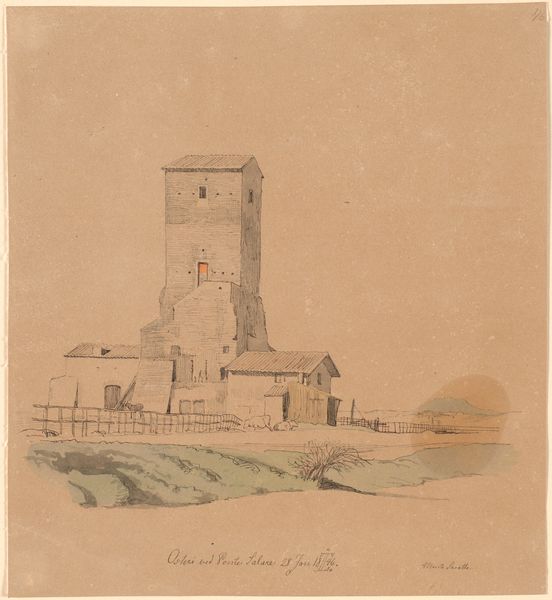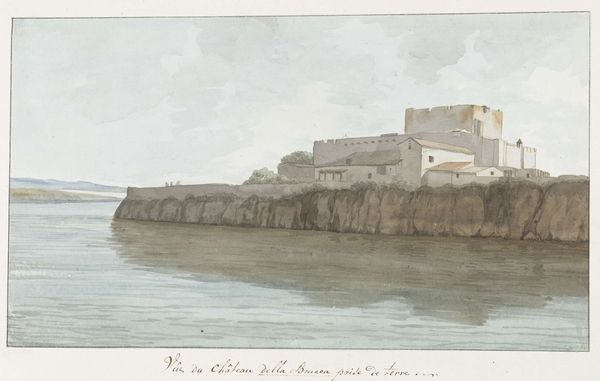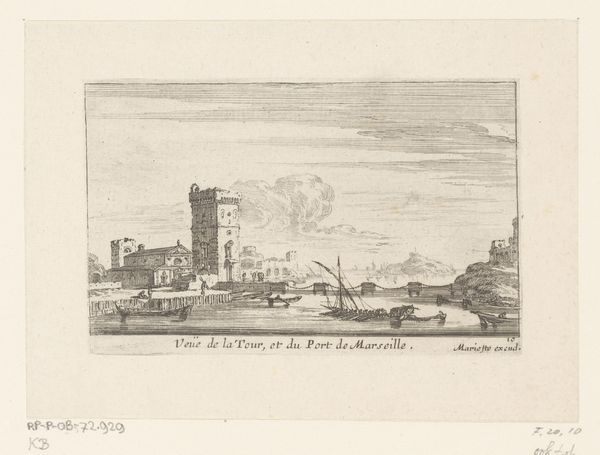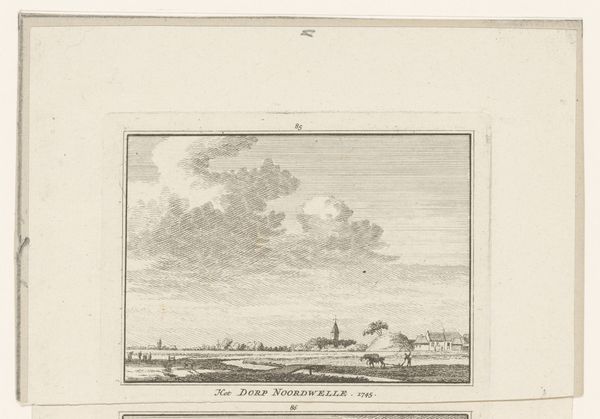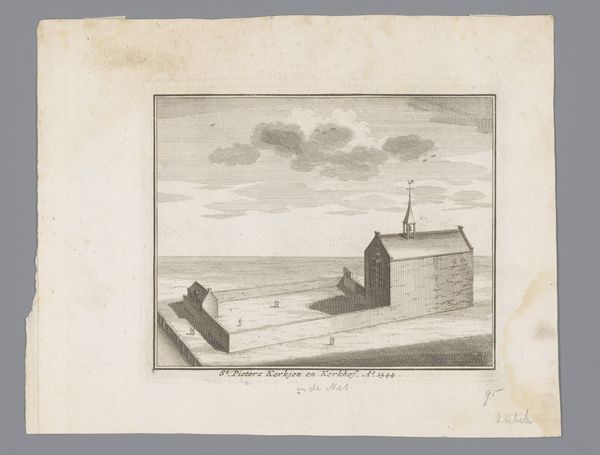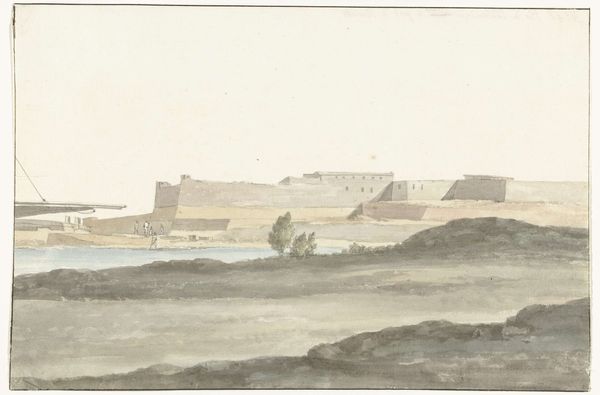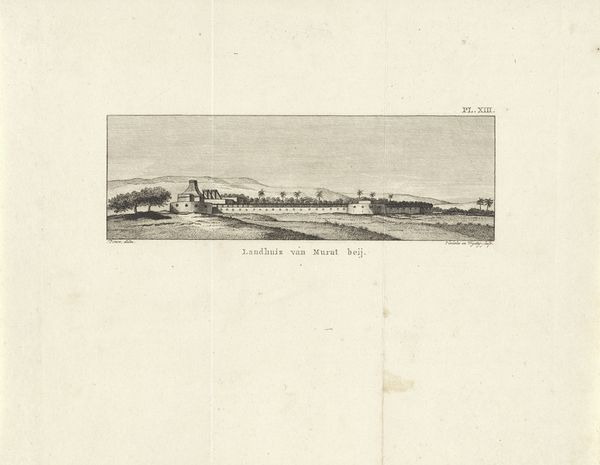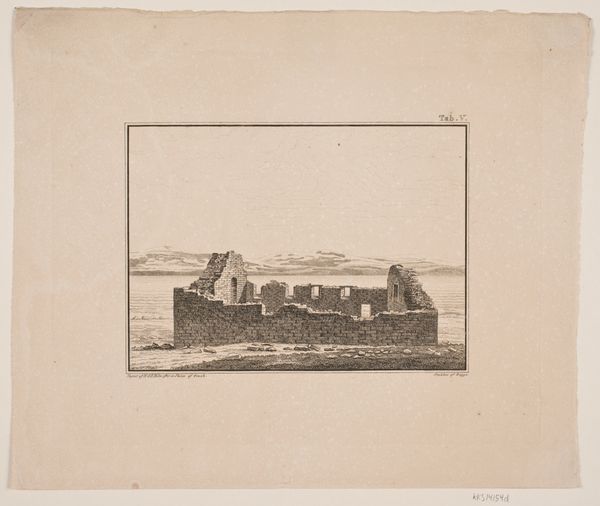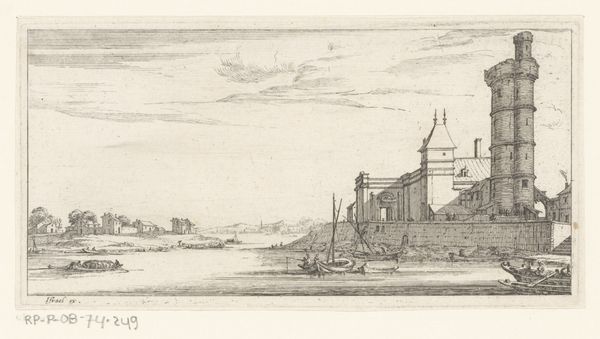
drawing, etching, pen
#
drawing
#
neoclassicism
#
etching
#
pencil sketch
#
landscape
#
etching
#
pen
Dimensions: height 200 mm, width 306 mm
Copyright: Rijks Museum: Open Domain
Curator: This is “View of the lighthouse, called Colombaro, in Trapani," a pen, pencil, and etching piece from 1778 by Louis Ducros, presently held at the Rijksmuseum. It presents a minimalist coastal scene. Editor: My first impression is its serenity. The light is muted, and the composition—the subtle layering of sea, land, and sky—creates a quietly powerful visual harmony. There’s an inherent calmness in this restraint. Curator: I'm particularly interested in what the lighthouse means here, culturally. Lighthouses, traditionally, represent safety, guidance, vigilance. In an image from 1778, what were the specific maritime concerns of Trapani? Were pirates common? Was it about signaling trade routes? Editor: The formal elements lend to those symbolic considerations, I think. Notice how the lighthouse's cylindrical form punctuates the horizontal expanse, its verticality reinforced by its reflection in the water. It anchors the composition. This visual stability would then contribute to its symbolic message. Curator: Exactly. And note the small boat—perhaps carrying essential provisions? Boats signify journeys and, often, potential dangers, but this is diminutive compared to the imposing solidity of the lighthouse on the island. Is the relationship of the lighthouse to the boat communicating the safety that human ingenuity or political strength provide in navigating life's uncertainties? Editor: A point well-taken. Looking at Ducros' lines themselves—thin, almost hesitant—they give an airy, atmospheric quality to the scene, one which speaks to the monumentality of Neoclassicism while giving a sense of how nature trumps such ideas. See the haze on the horizon! The etching captures that sublime vastness that underscores the smallness of the tower against the sky. Curator: So, the sublime versus the signified. It provides much food for thought regarding the context in which such drawings were originally conceptualized—a kind of cultural cartography! Editor: Precisely. It's amazing how much depth emerges from this seemingly simple arrangement of shapes and shades. I appreciate that we brought those symbolic resonances together with the material details of the etching itself.
Comments
No comments
Be the first to comment and join the conversation on the ultimate creative platform.
